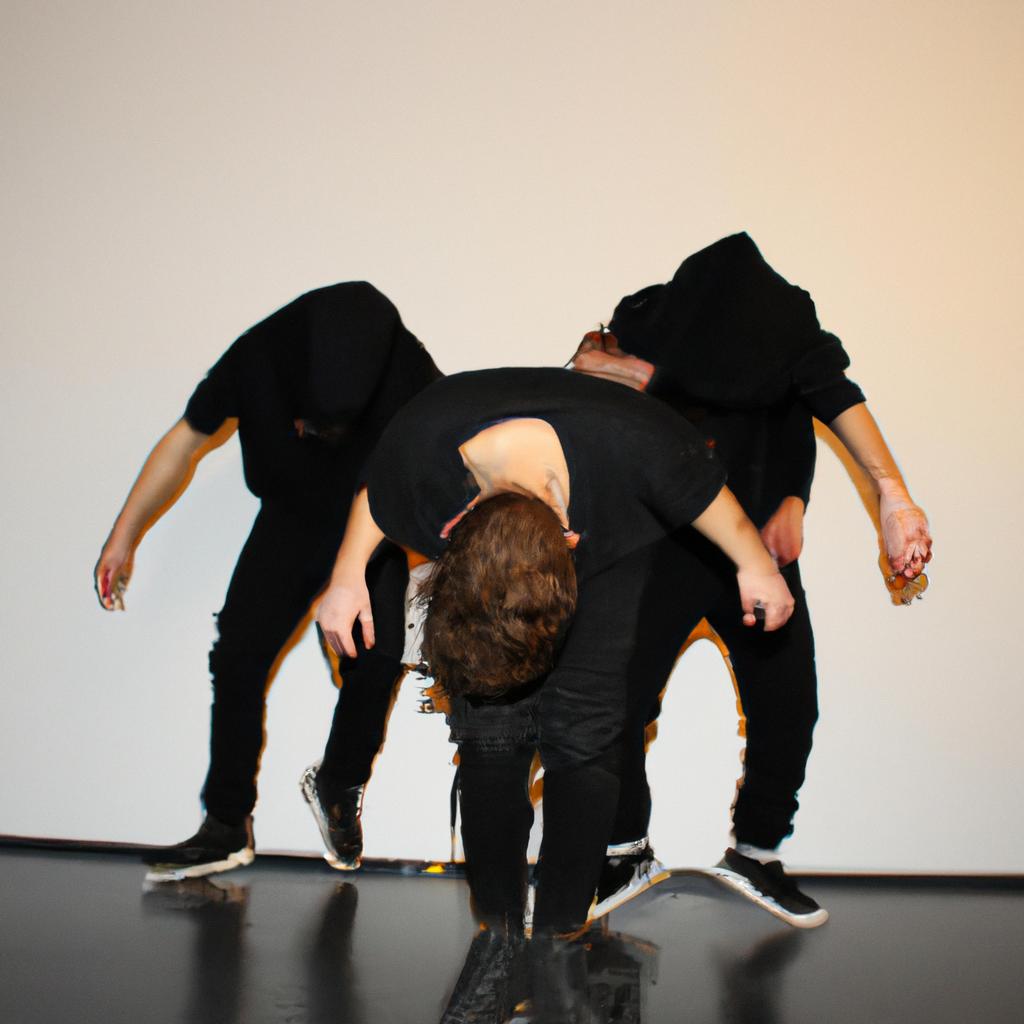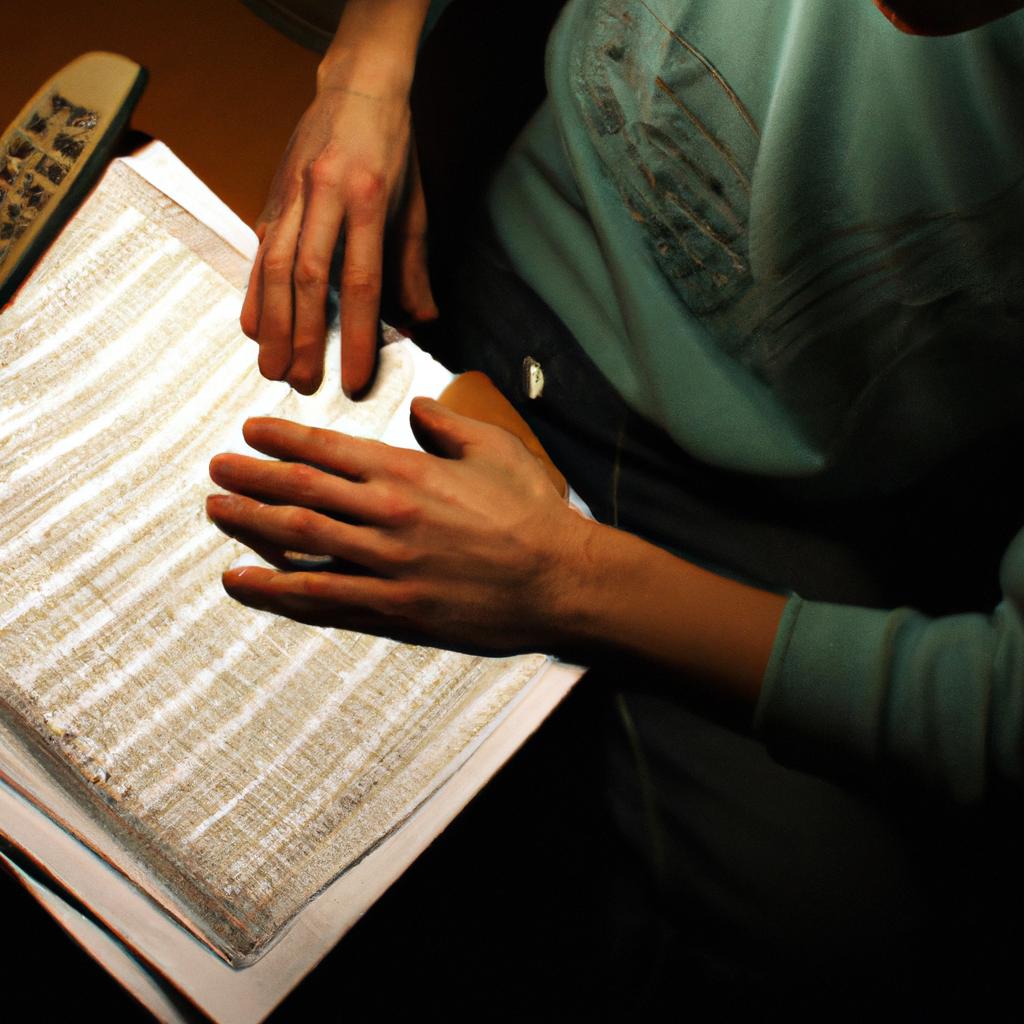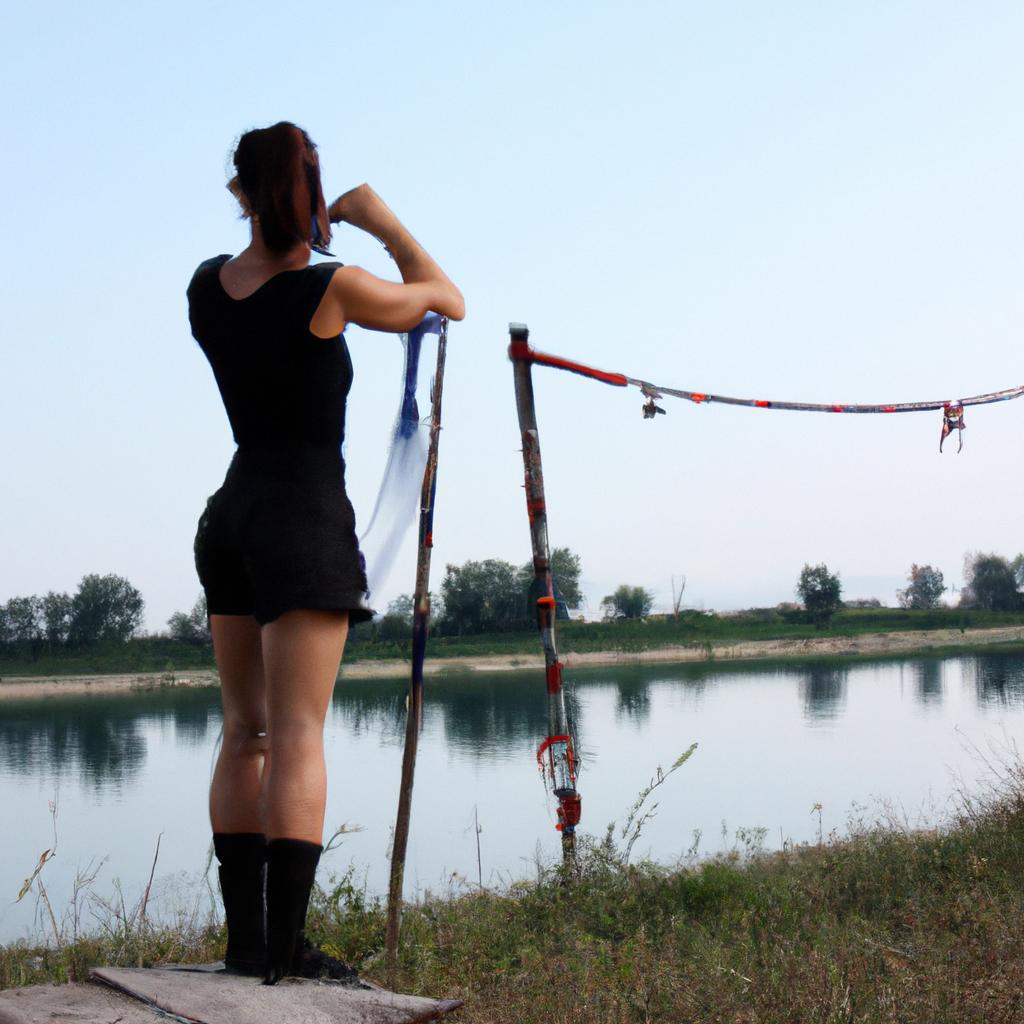In today’s fast-paced world, finding an outlet for creativity and self-expression has become increasingly important. One avenue that provides individuals with the opportunity to unleash their artistic potential is dance workshops. These interactive sessions offer a platform for participants to explore various forms of movement while immersing themselves in the power of arts and music. This article aims to discuss the significance of dance workshop directories as valuable resources that connect aspiring dancers, professionals, and enthusiasts alike.
Imagine a young dancer named Sarah who has always yearned to expand her repertoire beyond classical ballet. She dreams of exploring contemporary dance styles but feels overwhelmed by the vastness of opportunities available in her city. Herein lies the importance of a comprehensive dance workshop directory – it serves as a compass, guiding individuals like Sarah towards workshops tailored specifically to their interests and skill levels. Dance workshop directories act as virtual hubs where organizers can display vital information such as location, duration, cost, and instructor profiles. By presenting these details in one centralized platform, individuals are empowered with knowledge about upcoming events and can make informed decisions based on their personal goals and preferences.
Furthermore, dance workshop directories foster a sense of community among artists from diverse backgrounds. In addition to providing access to information about local workshops, they often include forums or discussion boards where participants can connect with one another, ask questions, share experiences, and offer support. This sense of community allows dancers to forge connections and build networks within the industry, creating opportunities for collaboration and growth.
Additionally, dance workshop directories can serve as a valuable resource for professionals in the field. Choreographers and instructors can use these platforms to promote their workshops, reach a wider audience, and attract participants who are specifically interested in their style or approach. This not only helps them expand their network but also contributes to the overall development of the dance community by offering diverse perspectives and techniques.
For dance enthusiasts or individuals looking to explore dance as a hobby, these directories provide an accessible way to discover new workshops and styles that may not be widely known or advertised. They offer a platform for beginners to dip their toes into different genres without committing to long-term classes or programs. By attending various workshops through this avenue, individuals have the opportunity to discover what resonates with them most and then pursue further training if desired.
In conclusion, dance workshop directories play a crucial role in connecting aspiring dancers, professionals, and enthusiasts alike. They provide a centralized platform that offers information about upcoming events, connects individuals with like-minded artists, fosters community engagement through forums or discussion boards, and serves as a valuable resource for professionals seeking to promote their workshops. Ultimately, these directories contribute significantly to the accessibility of dance as an art form while encouraging self-expression and creativity within individuals who are passionate about movement.
Finding the Right Dance Workshop for Your Skill Level
Imagine you are a passionate dancer looking to improve your skills and express yourself through movement. You search for dance workshops that can cater to your specific needs and aspirations, but with so many options available, it becomes overwhelming. How do you navigate this sea of choices to find the workshop that is just right for you? This section will guide you in making an informed decision by considering factors such as skill level, learning style, instructor expertise, and workshop goals.
Firstly, determining your current skill level is crucial in finding the appropriate dance workshop. Are you a beginner with little to no prior experience or an intermediate/advanced dancer seeking to refine your technique? Knowing where you stand allows you to gauge which workshops align with your abilities and objectives. For example, if you are a beginner interested in contemporary dance, enrolling in a workshop designed specifically for beginners would provide a solid foundation and prevent feelings of being overwhelmed or outpaced.
Next, consider your preferred learning style. Some individuals thrive in structured environments with clear expectations and feedback loops, while others prefer more exploratory approaches that encourage creativity and self-expression. Reflecting on how you learn best will help narrow down the type of dance workshop that suits your preferences.
Furthermore, evaluating the expertise of instructors is essential when selecting a dance workshop. Look for experienced professionals who possess extensive knowledge in their respective styles of dance. Consider researching their backgrounds and achievements within the industry to ensure they have the qualifications necessary to guide and inspire participants effectively.
Lastly, identify what goals you hope to achieve through attending a dance workshop. Do you want to focus on technical mastery or prioritize artistic expression? Determine whether these goals align with those offered by different workshops before making your final selection.
In summary, finding the right dance workshop involves assessing various factors such as skill level, preferred learning style, instructor expertise, and personal goals. By considering these aspects carefully, dancers can make informed decisions that maximize their growth and overall experience.
| Embrace Dance Workshop Checklist |
|---|
| * Skill level: Beginner, Intermediate, Advanced |
| * Learning style: Structured or exploratory |
| * Instructor expertise: Extensive industry experience |
| * Workshop goals: Technical mastery or artistic expression |
The checklist above can help you organize your thoughts as you embark on this exciting journey of finding the perfect dance workshop for yourself.
Exploring Different Dance Styles and Techniques
Transitioning from finding the right dance workshop for your skill level, it is now essential to delve into the diverse world of dance styles and techniques. Each style offers its own unique expression, rhythm, and movement vocabulary, allowing dancers to explore their creativity through arts and music. Let us consider an example of a dancer named Sarah who started her journey with ballet but later discovered her passion for hip-hop.
When exploring different dance styles, it is important to keep in mind that each style has its distinct characteristics and technical requirements. This section aims to provide an overview of some popular dance styles and techniques:
-
Ballet:
- Graceful movements emphasizing strength, control, and precision.
- Utilizes classical music as accompaniment.
- Requires extensive training in technique such as turnout, pointed toes, and proper body alignment.
- Commonly performed on pointe shoes.
-
Hip-Hop:
- Energetic and expressive movements rooted in urban street culture.
- Often accompanied by contemporary pop or rap music.
- Focuses on isolation of body parts, freestyle improvisation, and intricate footwork.
- Incorporates elements from various sub-styles like breakdancing and popping.
-
Contemporary:
- Blends elements from ballet and modern dance while incorporating innovative movements.
- Music can range from classical compositions to electronic beats.
- Emphasizes fluidity, versatility, emotionality, and personal interpretation.
- Encourages creative exploration beyond traditional boundaries.
-
Latin Dances (e.g., Salsa):
- Vibrant partner dances originating from Latin American cultures.
- Typically danced to salsa or other Latin rhythms.
- Involves intricate footwork patterns combined with sensual hip movements.
- Promotes connection between partners through lead-and-follow dynamics.
Exploring these different dance styles allows individuals like Sarah to expand their movement vocabulary, discover new ways of self-expression, and challenge themselves artistically. By immersing oneself in various dance techniques, dancers can open up a world of possibilities for creative exploration.
Understanding the Benefits of Dance for Physical and Mental Health, we delve into how engaging in dance provides numerous advantages beyond artistic expression.
Understanding the Benefits of Dance for Physical and Mental Health
In the previous section, we delved into the fascinating world of dance styles and techniques. Now, let us delve deeper into the benefits that dance offers in terms of physical and mental health. To illustrate this, imagine a young individual named Emma who struggled with anxiety and self-esteem issues. She decided to enroll in a contemporary dance workshop as a way to express herself creatively.
The impact of dance on physical and mental well-being is undeniable. Here are some key points highlighting its benefits:
- Increased flexibility: Dance requires fluid movements and stretches, leading to improved flexibility over time.
- Enhanced cardiovascular fitness: The energetic nature of dancing gets your heart pumping, improving stamina and overall cardiovascular health.
- Stress reduction: Engaging in dance can provide an outlet for stress release, allowing individuals like Emma to escape from their worries momentarily.
- Boosted self-confidence: Through mastering new moves and performing in front of others, dancers often experience increased self-esteem.
To further emphasize these advantages, consider the following table showcasing how different aspects of physical and mental health can be positively influenced by engaging in regular dance workshops:
| Aspects of Health | Physical Benefits | Mental Benefits |
|---|---|---|
| Flexibility | Improved range of motion | Enhanced body awareness |
| Cardiovascular | Increased endurance | Reduced symptoms of depression |
| Stress Reduction | Lower cortisol levels | Improved mood |
| Self-Confidence | Better posture | Greater self-assurance |
By participating in dance workshops like Emma did, individuals have the opportunity to not only improve their physical health but also nurture their emotional well-being. Dancing provides an avenue for personal growth that extends beyond just the steps performed on stage.
As we move forward into our next section about discovering the role of music in dance workshops, it becomes evident that music plays a vital part in enhancing the dance experience. It sets the rhythm and mood, driving dancers to express themselves through movement with intricate synchrony. Let us now explore this dynamic relationship between music and dance, paving the way for a deeper understanding of their interconnectedness.
Discovering the Role of Music in Dance Workshops
Transitioning from the previous section, where we explored the numerous benefits of dance for physical and mental health, it is now crucial to delve into the role that music plays in dance workshops. By examining this connection, we can gain a deeper understanding of how music influences creativity in dance.
Imagine a scenario where a group of individuals with varying levels of dancing experience gather at a workshop led by professional dancers. As they begin their warm-up exercises, an energetic beat starts playing in the background. The participants immediately feel a surge of motivation and excitement coursing through their bodies. This example showcases how music serves as an essential element in setting the mood and atmosphere during dance workshops.
To further understand the impact of music on creativity in dance workshops, let us consider four key factors:
- Rhythm: Music provides dancers with a rhythmic structure to follow, enabling them to synchronize their movements effectively.
- Emotion: Different genres of music evoke distinct emotions within individuals, allowing dancers to express themselves more authentically.
- Inspiration: The melodies and lyrics present in music act as sources of inspiration for choreographers, sparking innovative ideas and concepts.
- Energy: The tempo and intensity of music influence the energy level during dance sessions, facilitating dynamic performances.
In addition to these factors, it is worth noting that various studies have shown how specific types of music can stimulate different areas of the brain associated with movement coordination and emotional expression. To illustrate this connection between dance and music further, please refer to Table 1 below:
| Musical Genre | Associated Emotions | Recommended Dance Style |
|---|---|---|
| Classical | Calmness | Contemporary Ballet |
| Hip Hop | Excitement | Street Dance |
| Latin | Passion | Salsa |
| Electronic | Euphoria | Freestyle |
Table 1: The Relationship Between Musical Genres, Emotions, and Dance Styles
In conclusion, music serves as a catalyst for creativity in dance workshops. By providing rhythm, evoking emotions, inspiring choreography, and influencing energy levels, it plays an integral role in enhancing the overall dance experience. Understanding this connection between music and dance can empower dancers to maximize their creative potential.
Transitioning into our next section on “Tips for Maximizing Creativity in Dance,” let us explore how participants can leverage these insights to unlock their artistic abilities without hesitation or restraint.
Tips for Maximizing Creativity in Dance
One example that highlights the transformative power of dance workshops is Sarah’s story. Sarah, a high school student struggling with anxiety and low self-esteem, decided to enroll in a contemporary dance workshop as a way to explore her creativity. Through this experience, she discovered not only the joy of movement but also gained confidence in expressing herself through dance. This case study demonstrates how dance workshops can have life-changing effects on individuals by fostering personal growth and empowerment.
Dance workshops offer numerous benefits that extend beyond physical exercise and technical training. They provide opportunities for participants to tap into their creativity and unleash their artistic potential. Here are some key advantages:
-
Self-expression: Dance allows individuals to communicate emotions and narratives without words. By engaging in choreography and improvisation exercises, participants can express themselves authentically, leading to enhanced emotional intelligence.
-
Stress relief: Dancing has been shown to reduce stress levels by promoting relaxation and releasing endorphins. The rhythmic movements combined with music create an immersive experience that helps individuals unwind and escape from daily pressures.
-
Mind-body connection: Dance encourages mindfulness by requiring participants to be fully present in their bodies while moving. This heightened awareness promotes self-reflection, body appreciation, and overall well-being.
-
Social interaction: Participating in a dance workshop fosters connections among like-minded individuals who share a passion for movement. Collaborative activities such as group performances or partner work build camaraderie and support networks within the dance community.
| Benefit | Description |
|---|---|
| Self-expression | Allows individuals to communicate emotions and stories through movement |
| Stress relief | Reduces stress levels by promoting relaxation |
| Mind-body connection | Enhances body awareness and mindfulness |
| Social interaction | Fosters connections and support networks within the dance community |
Incorporating dance workshops into one’s life can lead to personal growth, emotional well-being, and a sense of fulfillment. The next section will explore how these workshops provide opportunities for connecting with other artists and building a supportive community, emphasizing the importance of collaboration in the creative process.
Transitioning seamlessly into the subsequent section about “Connecting with Other Artists and Building a Supportive Community,” we delve deeper into the significance of establishing meaningful connections within the artistic realm.
Connecting with Other Artists and Building a Supportive Community
Having explored ways to maximize creativity in dance, the next step is to connect with other artists and build a supportive community. By fostering relationships within the dance world, dancers can benefit from shared experiences, diverse perspectives, and valuable collaborations. This section will discuss the importance of connecting with fellow artists and provide practical tips for building a strong network.
Example: Let’s consider the case of Maria, an aspiring contemporary dancer looking to expand her artistic horizons. Through networking events and workshops organized by local dance organizations, she was able to connect with choreographers, musicians, costume designers, and other dancers who shared her passion for creative expression. These connections allowed Maria to collaborate on various projects that pushed boundaries and challenged traditional notions of dance.
Building a Supportive Community:
- Attend professional development workshops or conferences where you can meet like-minded individuals.
- Join online forums or social media groups dedicated to dance where you can engage in discussions and exchange ideas.
- Collaborate on interdisciplinary projects that involve working with artists from different backgrounds.
- Volunteer or participate in community outreach programs related to dance.
| Benefits of Connecting with Fellow Artists |
|---|
| 1. Inspiration |
| 2. Collaboration |
| 3. Skill Enhancement |
| 4. Emotional Support |
Bullet Points:
- Engaging in meaningful conversations about artistry sparks inspiration and encourages personal growth.
- Collaborating with others allows for innovative ideas and unique performances.
- Interacting with artists from varied backgrounds helps develop versatile skills.
- A supportive community provides emotional support during challenging times.
By actively seeking opportunities to connect with other artists, dancers not only broaden their knowledge but also create a nurturing environment conducive to personal and professional growth. Through collaboration, they gain access to new perspectives and techniques which enhance their skill set. Additionally, being part of a supportive community fosters emotional well-being and provides a network of individuals who understand the challenges faced by dancers. Remember, building connections is an ongoing process that requires effort and dedication, but the rewards can be immeasurable in terms of personal fulfillment and artistic achievement.





